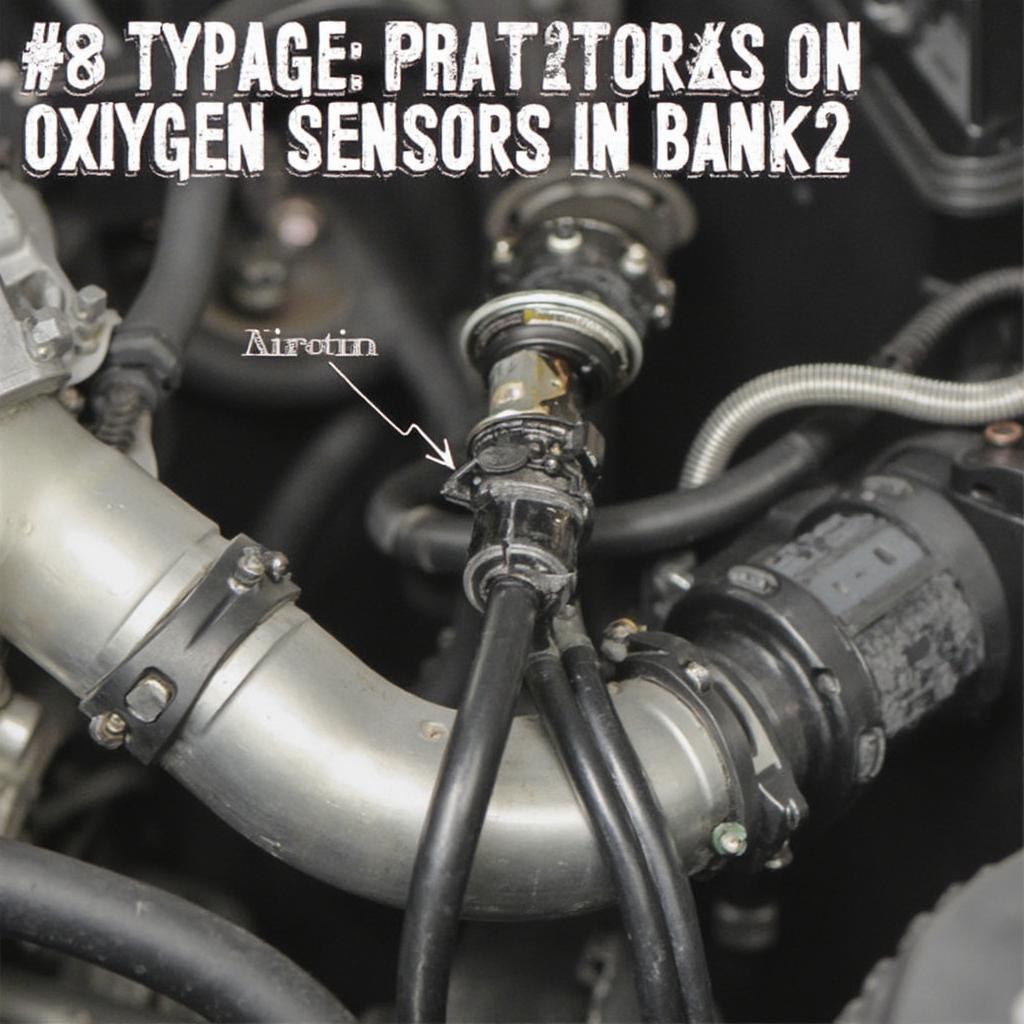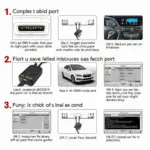The OBD2 code P0175 indicates a rich fuel condition in bank 2 of your engine. This means the engine control module (ECM) has detected that the air-fuel mixture in bank 2 has too much fuel and not enough air. This can lead to a variety of performance issues and decreased fuel economy. Understanding this code is crucial for effective troubleshooting and repair.
What Does OBD2 Code P0175 Mean?
P0175 specifically refers to a rich condition in bank 2. In vehicles with V-shaped engines (V6, V8, etc.), the cylinders are divided into two banks. Bank 2 typically refers to the side of the engine opposite the cylinder number 1. This code signals that the ECM is receiving readings from the oxygen sensors indicating an excessively rich air/fuel mixture on that particular bank.
Causes of OBD2 Code P0175
Several factors can contribute to a P0175 code. Understanding these potential causes is crucial for accurate diagnosis and repair. These include:
- Faulty Oxygen Sensor(s): A malfunctioning oxygen sensor in bank 2 can send incorrect signals to the ECM, leading to a misdiagnosis of a rich condition.
- Fuel Injector Issues: A leaking or stuck-open fuel injector in bank 2 will deliver excess fuel, resulting in a rich mixture.
- Fuel Pressure Regulator Problems: A faulty fuel pressure regulator can cause abnormally high fuel pressure, leading to excessive fuel delivery.
- Mass Airflow (MAF) Sensor Issues: A dirty or failing MAF sensor can provide inaccurate air intake readings to the ECM, causing it to calculate the wrong fuel mixture.
- Vacuum Leaks: Leaks in the vacuum system can introduce unmetered air into the engine, disrupting the air/fuel ratio.
- Exhaust Leaks: Leaks in the exhaust system before the oxygen sensors can also affect the readings and trigger a P0175 code.
- Engine Coolant Temperature (ECT) Sensor Malfunction: A faulty ECT sensor can make the ECM think the engine is cold, resulting in a richer mixture being delivered.
 Oxygen Sensor in Bank 2
Oxygen Sensor in Bank 2
Symptoms of OBD2 Code P0175
Recognizing the symptoms associated with a P0175 code can help you identify the problem early on. Common symptoms include:
- Decreased Fuel Economy: A rich mixture consumes more fuel, leading to a noticeable drop in miles per gallon.
- Rough Idle: The engine may idle unevenly or stall due to the imbalanced air/fuel ratio.
- Black Smoke from Exhaust: Excessive fuel in the combustion chamber can cause black smoke to emit from the tailpipe.
- Strong Fuel Odor: Unburnt fuel can produce a noticeable gasoline smell from the exhaust.
- Check Engine Light: The illumination of the check engine light is the most common indicator of a problem, including the P0175 code.
How to Diagnose OBD2 Code P0175
Diagnosing a P0175 code requires a systematic approach:
- Use an OBD2 Scanner: Retrieve the code and any other associated codes.
- Visually Inspect Vacuum Lines: Look for cracks, loose connections, or damage to the vacuum hoses.
- Check Fuel Pressure: Use a fuel pressure gauge to verify that the fuel pressure is within the manufacturer’s specifications.
- Inspect Fuel Injectors: Look for leaks or signs of malfunctioning injectors.
- Test Oxygen Sensors: Use a multimeter or an OBD2 scanner to check the oxygen sensor readings.
- Check MAF Sensor: Inspect the MAF sensor for dirt or damage. Clean or replace as needed.
How to Fix OBD2 Code P0175
Fixing the P0175 code depends on the underlying cause. Repairs may involve:
- Replacing Faulty Oxygen Sensor(s): If the oxygen sensor is malfunctioning, replacement is usually necessary.
- Repairing or Replacing Fuel Injectors: Leaking or clogged injectors require repair or replacement.
- Replacing Fuel Pressure Regulator: A faulty fuel pressure regulator needs to be replaced to restore proper fuel pressure.
- Cleaning or Replacing MAF Sensor: A dirty MAF sensor can often be cleaned, but a faulty one needs replacement.
- Repairing Vacuum Leaks: Identify and repair any leaks in the vacuum system.
- Repairing Exhaust Leaks: Address any exhaust leaks before the oxygen sensors.
“Addressing a P0175 code promptly is crucial,” says Michael Davis, ASE Certified Master Technician. “Ignoring this code can lead to further engine damage and increased repair costs.”
What if the P0175 Code Returns After Repair?
If the code returns after repairs, double-check all connections and components related to the previous repair. It’s also possible that another issue is contributing to the rich condition. “Sometimes, multiple factors can cause a rich condition,” adds Davis. “A thorough diagnostic process is key to identifying all underlying problems.”
Conclusion
The OBD2 code P0175 signals a rich fuel condition in bank 2, which can lead to various performance issues and reduced fuel efficiency. Understanding the potential causes, symptoms, and diagnostic steps can help you address this issue effectively and prevent further engine damage. Using an OBD2 scanner and following a systematic approach is essential for accurate diagnosis and repair of the P0175 code.
FAQ
- What is the difference between P0171 and P0175? P0171 refers to a system too lean (bank 1) while P0175 refers to a system too rich (bank 2).
- Can I drive with a P0175 code? While you might be able to drive for a short period, it’s recommended to address the issue promptly to prevent further damage.
- How much does it cost to fix a P0175 code? The cost depends on the underlying cause and can range from a simple sensor cleaning to more expensive component replacements.
- Can a bad gas cap cause a P0175 code? While a bad gas cap can cause other codes related to the evaporative emissions system, it’s unlikely to directly cause a P0175.
- How can I prevent a P0175 code in the future? Regular maintenance, including fuel system cleaning and timely sensor replacements, can help prevent this code.
For further assistance, please contact us via WhatsApp: +1(641)206-8880, Email: [email protected] or visit us at 789 Elm Street, San Francisco, CA 94102, USA. Our customer service team is available 24/7.
